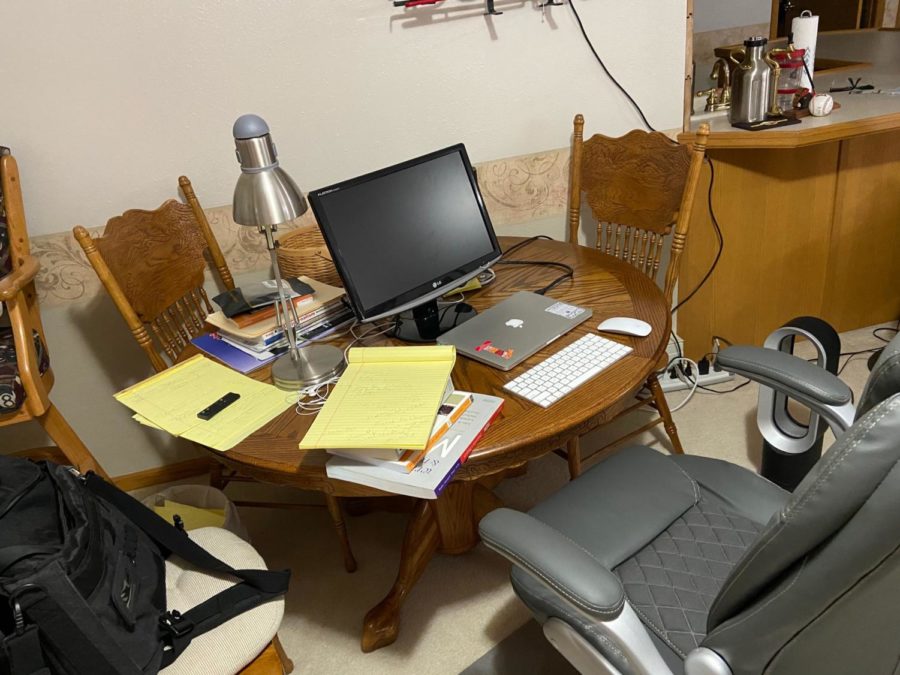Iowa State instructors navigate working in a virtual setting
Gary Sawyer, assistant teaching professor in the Greenlee School of Journalism and Communication, shows his home workspace. Sawyer said it’s hard to not see students’ reaction as most meetings are via video call because of the online instruction time period.
April 8, 2020
Iowa State students and faculty experienced an unprecedented transition as all courses moved to a virtual setting due to COVID-19 preventing face-to-face contact.
While students adjust to consuming the content their instructors designed, faculty scrambled to provide their courses online for the duration of the semester. Many resources on campus opened for them to continue their work, but professors lament how the online classroom does not compare to the in-person experience.
Gary Sawyer, assistant teaching professor in the Greenlee School of Journalism and Communication, mentioned faculty miss visiting their students as much as students miss meeting in person.
“When I talk with students face-to-face, I can usually tell if the class is dragging or uninteresting,” Sawyer said. “I can tell if students are struggling with an assignment and need more guidance. When the students aren’t present, it’s really hard to tell how things are going.”
Some professors attempted to continue with synchronous learning, but others restructured the content of their courses to PowerPoints with voice overs. Whatever they chose, it required many faculty members to learn new resources.
To fully utilize these platforms, some professors consulted with online technology support services at Iowa State and through Canvas, WebEx and Zoom. The external services receive a significant amount of traffic as many universities and employers consult the same resources.
Rachel Haywood-Ferreira, associate professor of world languages and cultures, said her experience with these support services required patience.
“I did have a couple of questions that I needed to go to the 24/7 Canvas helpline about,” Haywood-Ferreira said. “I waited on the phone for an hour, and then my call got dropped, so I waited another hour-and-a-half and was connected. They were extremely helpful, but they couldn’t answer all of my questions.”
Online coursework for professors who do not regularly teach online requires dedication to emulate the experience, which can strain professors’ broadband capabilities.
Lucía Suárez, associate professor of world language and cultures, said faculty share the pains of connectivity issues.
“Online, we are on 24/7, with family and households, that is not sustainable,” Suárez said. “I always answer within 24 hours, but expecting immediate answers, along with a myriad of WebEx and Zoom meetings, is hard on your faculty that really do want to be there full-time for you but also need to not burn out.”
Learning content virtually that was never intended to be online may have created obstacles for many professors, but they adapted their courses and home lives to maintain their connection with students.

















